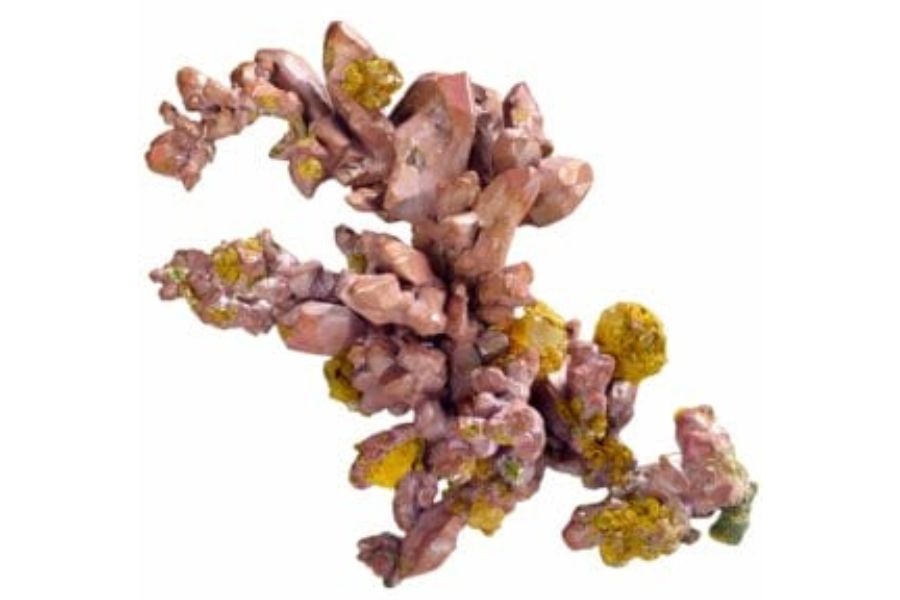Michigan is a treasure chest just waiting to be opened, and you don’t need to be a geologist to appreciate the riches hidden beneath our feet. This state is full of hidden gems, both literally and figuratively, just waiting to be discovered.
From the copper-rich grounds of the Upper Peninsula to the iconic Petoskey stones along Lake Michigan’s shores, there’s so much more to Michigan’s landscape than you might realize.
If you’ve ever dreamed of finding something truly valuable, like the rare Isle Royale greenstone (our official state gem) or shiny native copper, you’re in the right place.
These aren’t just pretty rocks—they can be worth some serious cash to the right collector. But beyond the money, there’s something incredibly satisfying about finding these treasures with your own hands.
Let’s dive into what you can find and, even better, where to find it. Whether you’re looking for a new adventure, a collectible keepsake, or a little extra income, Michigan’s natural bounty is waiting for you.
The Most Valuable Rocks, Minerals, And Gems You Can Find In Michigan
Here’s your guide to all the valuable rocks and minerals hiding in our state.
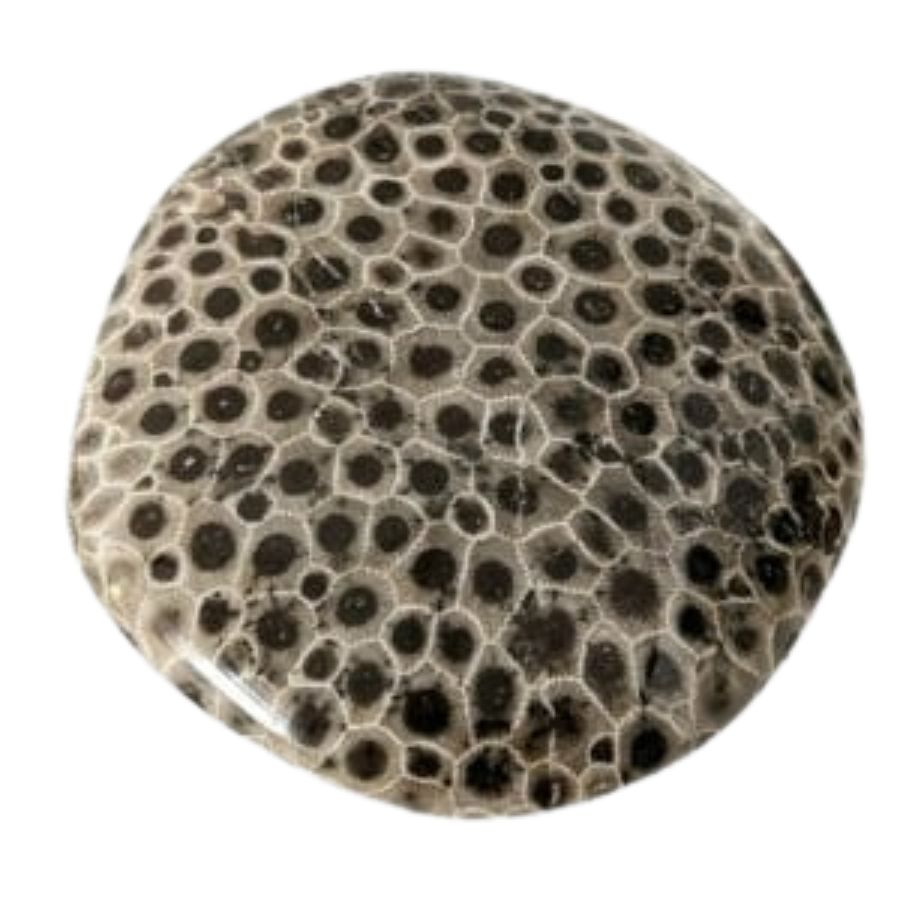
Petoskey stones
Petoskey stones are fossilized remains of Hexagonaria percarinata, a type of coral that thrived in the Devonian period. These corals formed in warm, shallow waters, and over millions of years, they were buried and fossilized.
When polished, their distinct hexagonal patterns—representing coral skeletons—come to life.
There’s more than one type of Petoskey stone, too. You might come across common Petoskey stones, which are grayish and have clear hexagonal patterns.
There are also “pink Petoskeys,” which have a reddish tint due to iron, and Charlevoix stones, a similar type of fossil but with smaller and tighter patterns. Each type has its own charm, and it’s exciting to hunt for all of them.
Why It’s Valuable
Petoskey stones aren’t just cool because they’re fossils; they also have a lot of personal and historical value. For one, they’re unique to Michigan and a symbol of our state’s natural history. People love to collect them, polish them, and turn them into jewelry or decorations.
A polished Petoskey stone is smooth, and shiny, and reveals the stunning detail of the ancient coral. Plus, hunting for them is a favorite pastime for many Michiganders—it’s a way to connect with nature, explore the outdoors, and even learn a little geology.
Great Places to Find It Here
If you’re ready to search for your own Petoskey stones, there are some fantastic spots around the state to explore. Here are a few of my favorites:
- Petoskey State Park: This is the classic spot to search for these stones, especially after a storm when waves wash them ashore. The beaches here are beautiful and offer a lot of variety in the stones you might find.
- Fisherman’s Island State Park: Located near Charlevoix, this park has miles of shoreline where Petoskey stones can be found. It’s a quieter spot compared to some of the busier parks, which makes for a peaceful hunt.
- Sleeping Bear Dunes National Lakeshore: While the dunes are the main attraction, the nearby beaches are a treasure trove for Petoskey stones. The variety of stones you can find here is amazing, and the views are unbeatable.
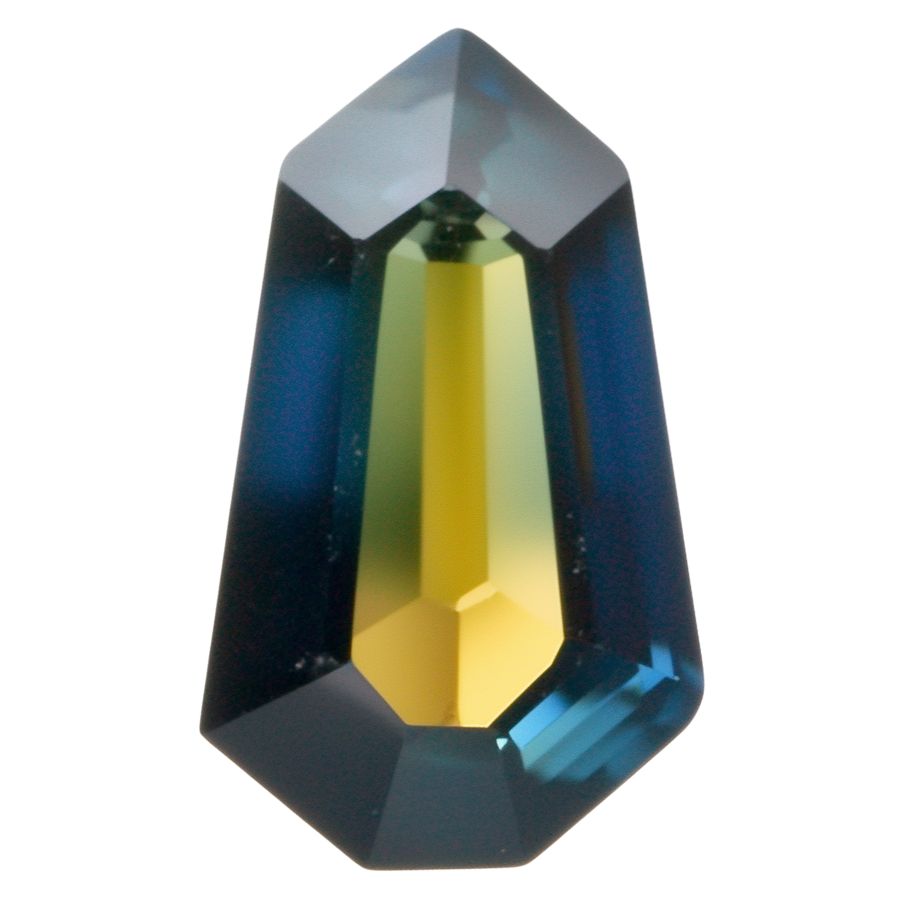
Sapphire
Sapphire is a type of corundum, a mineral that comes in various colors depending on trace elements like iron and titanium. While blue sapphires are the most famous, they also come in shades of yellow, green, pink, and even clear.
In Michigan, most of the sapphires you’ll come across are natural, untreated varieties, often in lighter shades like pale blue or yellow. They’re formed under high-pressure conditions and are a rare find, which makes the hunt even more exciting.
Why It’s Valuable
Sapphires are prized for their beauty, durability, and rarity. They’re one of the hardest gemstones, second only to diamonds, making them perfect for jewelry like rings and necklaces.
Beyond their practical uses, there’s something magical about holding a piece of Michigan’s geological history in your hand. Whether you’re a collector or just looking for a unique keepsake, sapphires have a special allure that’s hard to resist.
Great Places to Find It Here
If you’re ready to try your luck at finding a sapphire, Michigan has some fantastic spots where you can start your search. Here are a few of my favorite places:
- Keweenaw Peninsula: Known for its rich mining history, this area is great for rockhounds. Sapphires can occasionally be found near old mine tailings or in gravel pits.
- Isle Royale National Park: This remote, rugged island offers stunning scenery and a chance to uncover gemstones in glacial deposits along its rocky shores.
- Traverse City Gravel Deposits: The glacial deposits near Traverse City are another hotspot. Local gravel pits and riverbeds are great places to dig around for small sapphires and other gemstones.
Discover the best Sapphire location in Michigan in our full guide.
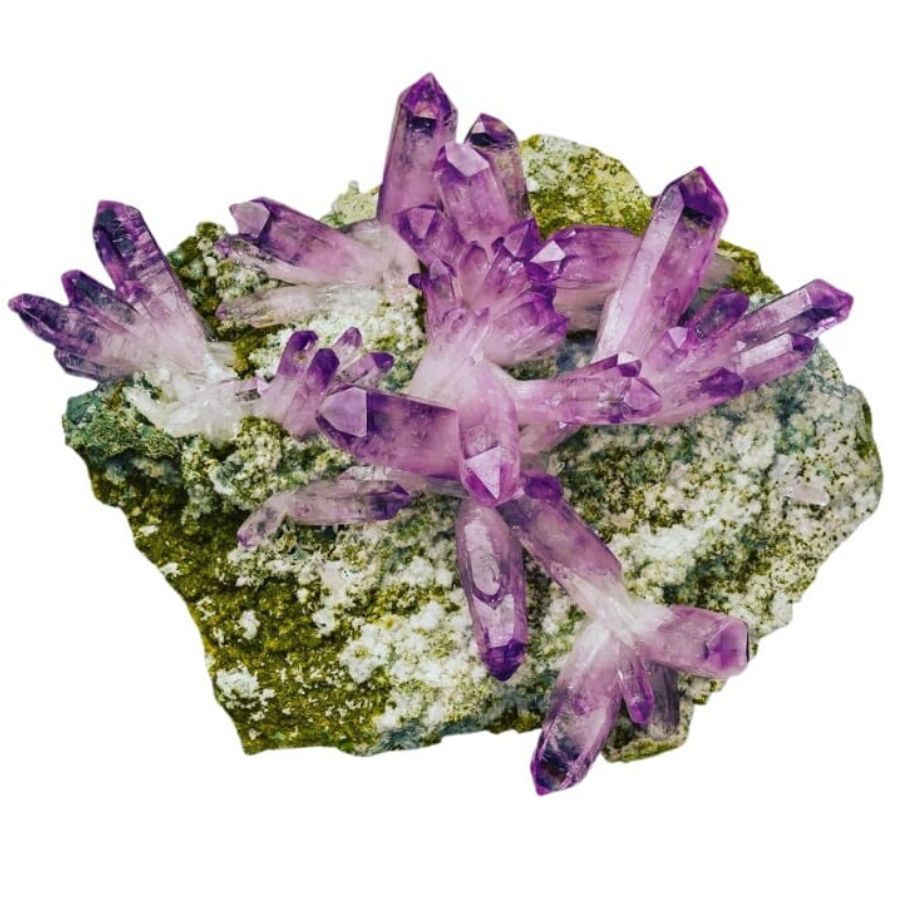
Amethyst
Amethyst is a type of quartz that gets its purple color from traces of iron and natural radiation within the stone.
In Michigan, amethyst can range from pale lavender to rich, deep purple shades. Some specimens even have bands of white quartz or hints of red and blue, making each find unique.
Most amethyst here is found in small geodes or scattered in loose mineral deposits. You can read through our complete Michigan guide to locate Amethyst deposits.
Why It’s Valuable
Amethyst is valuable not only for its beauty but also for its versatility. It’s used in jewelry, home décor, and even as a collector’s piece.
Beyond that, many people believe amethyst has calming and healing properties, making it a popular choice for mindfulness and relaxation.
Great Places to Find It in Michigan
If you’re ready to go on an amethyst hunt, Michigan has some fantastic spots where you can try your luck. Here are my top recommendations:
- Copper Falls Mine: With its rich mineral history, you might just uncover some amethyst treasures while exploring the old tailings and nearby rock formations.
- Porcupine Mountains: Amethyst has been known to show up in gravel beds and rocky outcrops here. It’s a great spot to combine a hiking trip with your search for gemstones.
- Keweenaw County: The entire county is a goldmine for mineral collectors, with many public areas where amethyst and other stones can be found. Roadside gravel pits and beaches often yield small but beautiful specimens.
Discover more Amethyst locations across Michigan in our comprehensive guide.
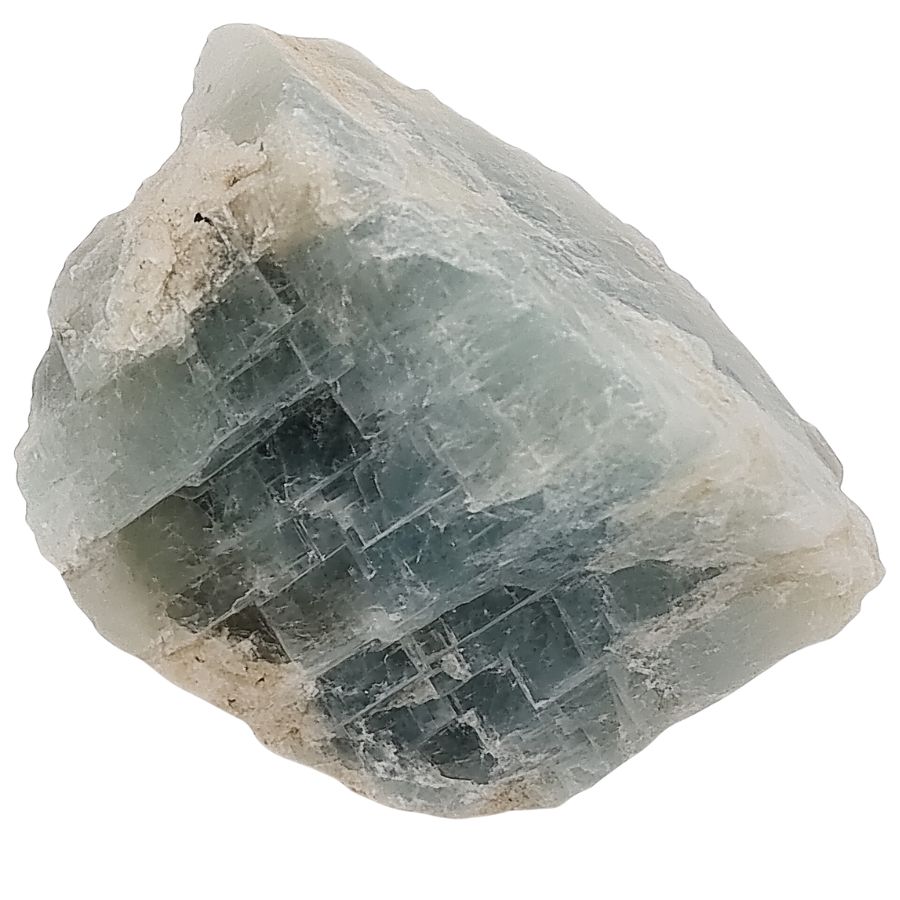
Beryl
Beryl is a fascinating mineral that’s found right here in Michigan. It’s part of a family of silicate minerals that form in hexagonal crystals, and it comes in a variety of colors, including green, blue, yellow, and even pink.
Some varieties of beryl, like emerald and aquamarine, are highly prized as gemstones. In Michigan, we mostly find beryl in its natural, less colorful form, often referred to as “common beryl.”
Why Beryl is Valuable
Beryl is valuable for a few reasons. First, it’s a collector’s dream, especially for people who love geology or minerals. Its unique hexagonal crystal structure and hardness make it a standout in any collection.
Additionally, even common beryl is a reminder of the geological processes that shaped Michigan’s landscape millions of years ago. If you’re lucky enough to find a rare gem-like piece, it could even have monetary value.
Great Places to Find Beryl in Michigan
If you’re up for an adventure, there are some great spots in Michigan where you can hunt for beryl. It’s all about knowing where to look, and a little patience goes a long way. Here are my top picks:
- Ishpeming Area: The Ishpeming area is famous for its rich geological history and mineral diversity. Local quarries and rock piles sometimes yield beryl crystals among other treasures.
- Houghton County: Known for its incredible copper deposits, Houghton County also has pegmatite outcrops where beryl can occasionally be found.
- Keweenaw Peninsula: This area is a goldmine for rockhounds. While people often come here for copper or agates, the pegmatites sometimes hold surprises like beryl.
Explore additional Beryl sites throughout Michigan with our detailed guide.
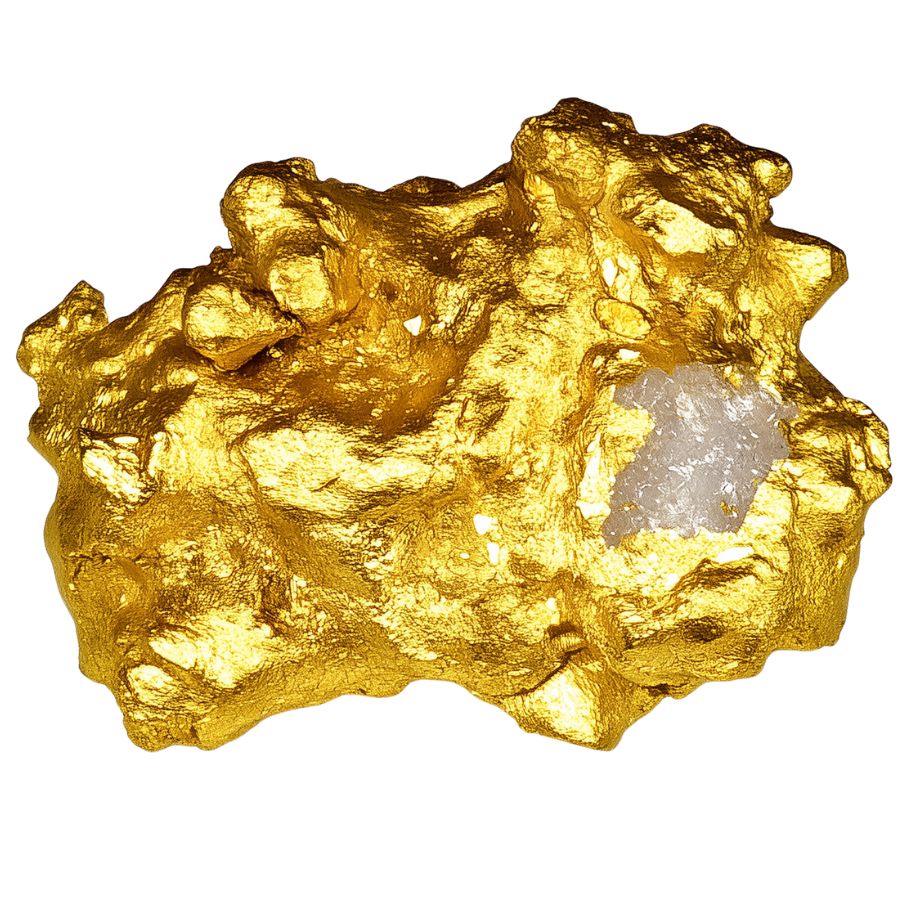
Gold
When it comes to gold in Michigan, we’re talking mostly about placer gold. This type of gold has been carried and deposited by water or glacial movements, making it perfect for amateur prospectors with a pan or sluice box.
You won’t find massive veins of gold like in other parts of the country, but what we do have is enough to keep the thrill alive. Occasionally, you might even stumble upon a small nugget in certain areas!
Why It’s Valuable
Gold is valuable for a couple of reasons. First, it’s rare—there’s only so much of it in the world, and demand always seems to outweigh supply.
Second, it has a timeless appeal. From ancient civilizations to modern tech, gold has been used for everything from jewelry and coins to electronics.
And let’s not forget its cultural value—finding even a small amount of gold feels like striking it rich, and that’s something that never gets old.
Great Places to Find It in Michigan
If you’re itching to grab a gold pan and see what you can find, Michigan has some great spots to explore. Here are a few of my top recommendations:
- Rogue River: The Rogue River has a history of yielding small flakes of placer gold, especially in gravel bars along the river.
- Grand River: The Grand River is another good spot for prospectors. Look for areas with slower-moving water or bends in the river where gold tends to settle.
- Menominee River: This area has a history of gold finds, and the natural beauty of the region makes it a fantastic place to explore.
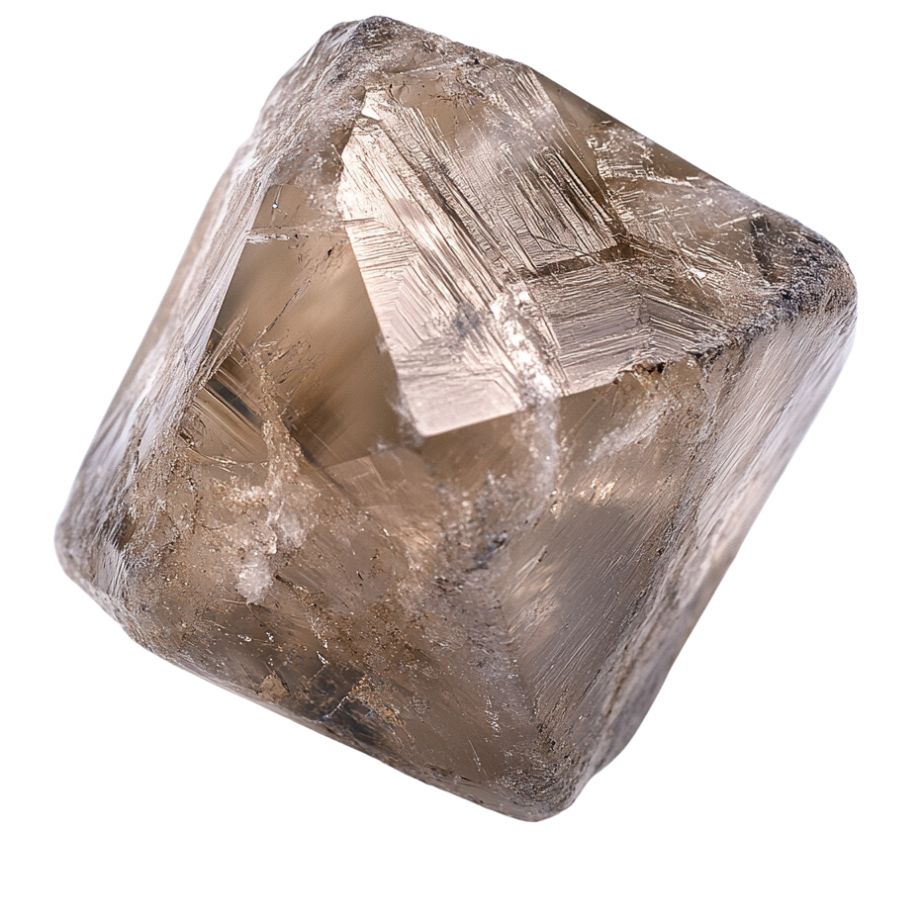
Diamond
While Michigan isn’t known for commercial diamond mining, there are stories of occasional diamond discoveries, particularly near glacial deposits.
Most of the diamonds found here are small, rough diamonds brought down by ancient glaciers, but they’re incredible pieces of Earth’s history (Here’s your go-to guide for Michigan Diamond locations).
Why Diamonds Are Valuable
Diamonds are prized for their beauty, durability, and rarity. Even small, rough diamonds hold significant scientific and monetary value.
For us Michiganders, finding a diamond is a unique connection to the geological past, as many of these stones were carried by glaciers from Canada during the Ice Age. It’s like holding a piece of Earth’s ancient story in your hand.
Great Places to Find Diamonds in Michigan
While diamond hunting isn’t a common activity here, a few areas are known for yielding interesting finds. If you’re up for an adventure, these are my top picks:
- Cook Lake: This area has been mentioned in stories of unusual rock discoveries, including small diamonds, thanks to glacial movement in the region. It’s a serene spot for treasure hunters.
- Grand Rapids: Glacial deposits in and around Grand Rapids have occasionally turned up fascinating finds, including rare stones like diamonds.
- Cass County: Known for its gravel pits and glacial moraine deposits, this southwestern part of Michigan is another promising location to keep on your radar for diamond hunting.
See our complete Michigan guide for more Diamond hunting grounds.

Silver
Silver in Michigan comes in a few forms, but the most common is native silver. This type of silver is usually discovered near copper deposits and can appear as veins, nuggets, or small flakes.
Occasionally, it’s found as silver sulfide minerals like argentite, but those are less common. The Keweenaw Peninsula is particularly famous for its native silver, often found in the same mines that produced the region’s abundant copper.
Why It’s Valuable
Silver isn’t just pretty; it’s incredibly useful. Its value comes from its rarity and versatility. It’s used in jewelry, coins, electronics, and even medical equipment. What makes Michigan’s silver special is its historical significance.
The native silver here is often associated with the early mining boom of the 19th century, making it a tangible piece of our state’s heritage.
Great Places to Find Silver in Michigan
If you’re up for an adventure and want to try finding silver yourself, Michigan has some excellent spots to explore. Here are three of the best places I’d recommend checking out:
- Little Iron River: Nestled in the Keweenaw Peninsula, this area is known for its stunning natural beauty and historic significance. Searching near the riverbed or surrounding areas could lead to exciting discoveries of native silver.
- White Pine Mine: This former copper mine also produced significant amounts of silver. The old mine tailings and surrounding grounds are worth exploring for mineral enthusiasts.
- Ontonagon County: With its long history of copper and silver mining, this county is a great place to search old mining areas and rock piles for silver specimens.
Check out our extensive guide to uncover 50 Legit Silver locations in Michigan.
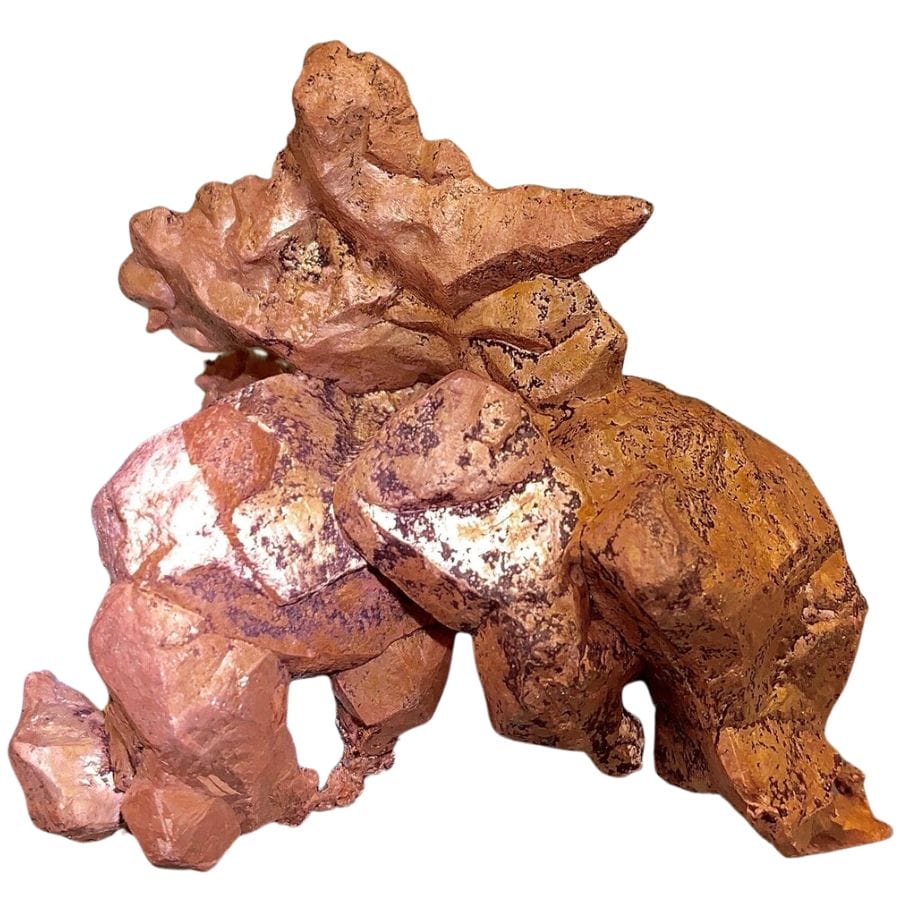
Copper
Copper in Michigan comes in its purest natural form, called native copper. This means it hasn’t been combined with other elements to form an ore, which is why it’s often easy to identify in the field.
Michigan is also home to various copper minerals which can be found alongside native copper in veins and deposits. Some specimens even show beautiful patterns of green and blue, thanks to oxidation-forming minerals like malachite and azurite.
Why It’s Valuable
Copper has always been prized for its usefulness and beauty. It’s highly conductive, which makes it essential for electronics, and it’s also malleable, so it’s easy to work with.
Historically, copper from Michigan played a huge role in the Industrial Revolution and helped establish the state’s mining industry.
Beyond its practical uses, native copper specimens are sought after by collectors for their rich colors, natural shapes, and historical significance.
Great Places to Find It Here
If you’re interested in finding your own piece of Michigan’s copper, you’re in luck! There are still plenty of places to explore, and some are even open to the public. Here are a few top spots I’d recommend:
- Keweenaw Peninsula: This is the heart of Michigan’s historic copper mining region. You can explore old mine tailings and even find native copper just lying on the ground if you’re lucky.
- Caledonia Mine: Located near Ontonagon, this is a great place for rockhounds. They offer tours and rock-collecting opportunities, making it easier to find native copper and other minerals.
- Cliff Mine: Found near Eagle Harbor, this historic site was one of the first profitable copper mines in the state. Exploring the area can yield small native copper pieces and gives a glimpse into Michigan’s mining heritage.
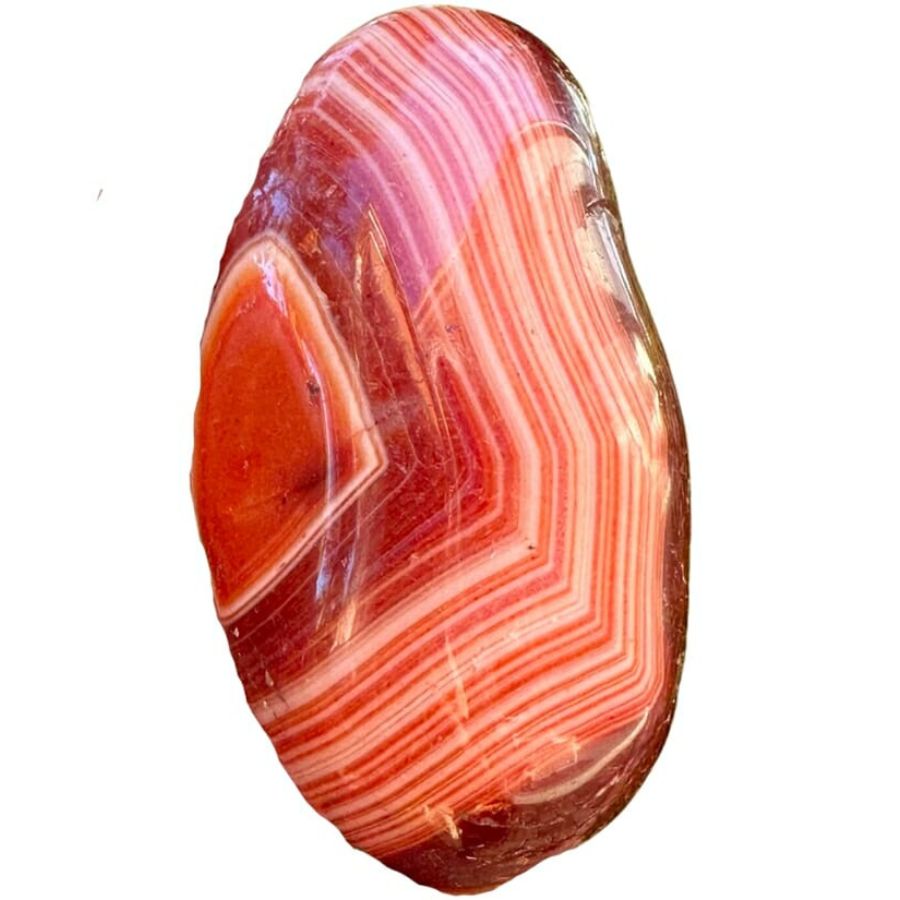
Agate
Agate is a semi-precious gemstone known for its colorful bands and translucent beauty. Here in Michigan, the most common type is the Lake Superior agate. This variety is famous for its red, orange, and yellow hues, which come from iron deposits in the region’s volcanic rock.
You might also come across eye agates (with circular patterns), fortification agates (with sharp, layered bands), or moss agates, which have organic, plant-like inclusions. Each one is like a little piece of art created by nature.
Why It’s Valuable
Agates are valuable not just for their beauty but also for their connection to Michigan’s geological history. They make unique keepsakes and are often used in jewelry or polished for display.
Collectors value them for their rarity and the thrill of the hunt—no two agates are alike! Plus, they’re a reminder of the ancient volcanic activity that shaped much of our Upper Peninsula.
Great Places to Find It Here
Michigan has some fantastic spots to find Agates in Michigan. Here are three great places to start:
- Lake Superior Beaches: The shores of Lake Superior, especially near Grand Marais and Whitefish Point, are some of the best spots to hunt for agates.
- Brockway Mountain: Located in the Keweenaw Peninsula, Brockway Mountain offers incredible views and rocky areas where you can find agates while enjoying breathtaking scenery.
- Grand Sable Dunes: These massive sand dunes near Munising are a prime spot for agate hunting. The shifting sands and shoreline often reveal beautiful stones waiting to be discovered.
Access our complete Michigan guide to locate more Agate deposits.
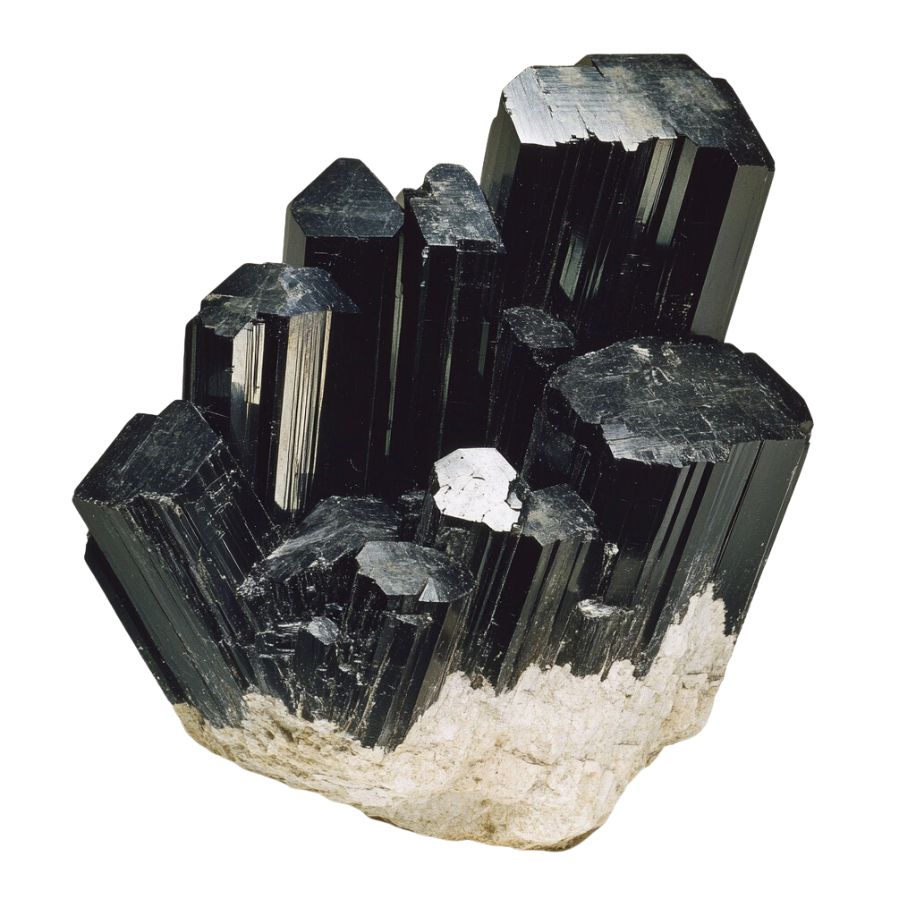
Tourmaline
Tourmaline is a mineral that forms in a wide range of colors due to the varying presence of different elements like iron, manganese, and lithium.
In Michigan, the most commonly found types are black tourmaline (schorl) and sometimes green or pink varieties.
The black tourmaline is particularly common in areas rich in granite or metamorphic rocks, making it a real find for those who know where to dig.
Why It’s Valuable
Tourmaline is sought after for both its beauty and its practical uses. It’s a favorite for jewelry due to its durability and vibrant colors, but it’s also valued by scientists for its unique electrical properties.
In Michigan, finding tourmaline adds a special thrill because it’s not as widespread as in other parts of the country. It feels like uncovering a hidden gem—literally!
Great Places to Find It Here
Michigan has some fantastic spots to find Tourmaline in Michigan. Here are a few of my favorites:
- Crystal Falls: This area in the Upper Peninsula is a rockhound’s dream. Known for its granite-rich geology, it’s a great spot to search for black tourmaline crystals.
- Napoleon Sandstone Quarry: While sandstone dominates, you might come across interesting mineral inclusions like tourmaline.
- Dickinson County: Dickinson County has a history of yielding fascinating mineral specimens, including tourmaline, especially near pegmatite formations.
Visit our in-depth Michigan guide for more Tourmaline gathering locations.
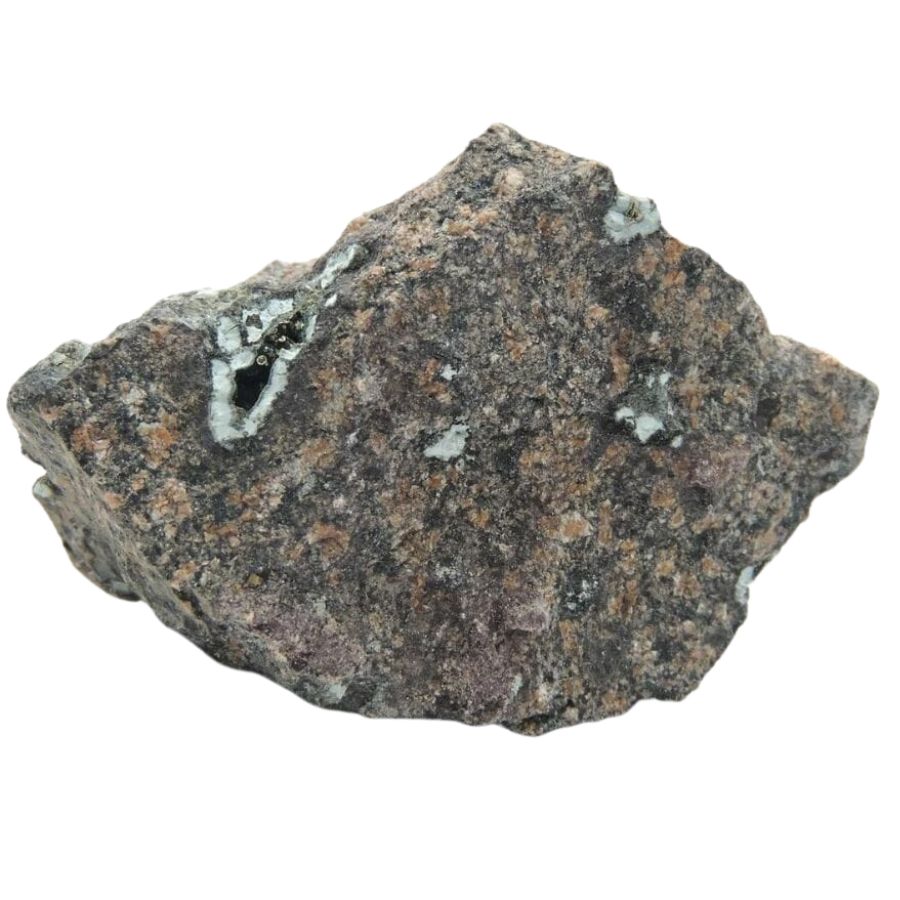
Chlorastrolite
Chlorastrolite is a variety of pumpellyite, a mineral that forms in volcanic rocks. Its name means “green star stone,” and when you see one, you’ll understand why!
These gems have a beautiful green color with a star-like or turtle shell pattern that makes them stand out. In Michigan, you’ll mainly find two types: Classic Chlorastrolite and Isle Royale Specimens.
Why It’s Valuable
There’s a lot to love about chlorastrolite. First, it’s rare and unique to Michigan, making it a symbol of our state’s natural beauty.
Second, its mesmerizing patterns and vibrant green color make it highly desirable for jewelry and collections. Plus, its connection to Michigan’s history and geology makes it a meaningful keepsake.
Great Places to Find It Here
If you’re up for an adventure, there are a few spots in Michigan where you can hunt for chlorastrolite. Remember, patience is key—it might take some time to find, but it’s so worth it!
- Isle Royale National Park: This remote island in Lake Superior is famous for its greenstones. You can’t take rocks from the park itself, but the experience of spotting them in their natural habitat is unforgettable.
- Keweenaw Peninsula Beaches: Try your luck along the shores of the Keweenaw Peninsula. Places like Eagle Harbor and Copper Harbor are popular among rockhounds.
- Lakeshore Areas of Presque Isle County: The rocky beaches along Lake Huron in Presque Isle County, especially near Rogers City, occasionally turn up chlorastrolite.
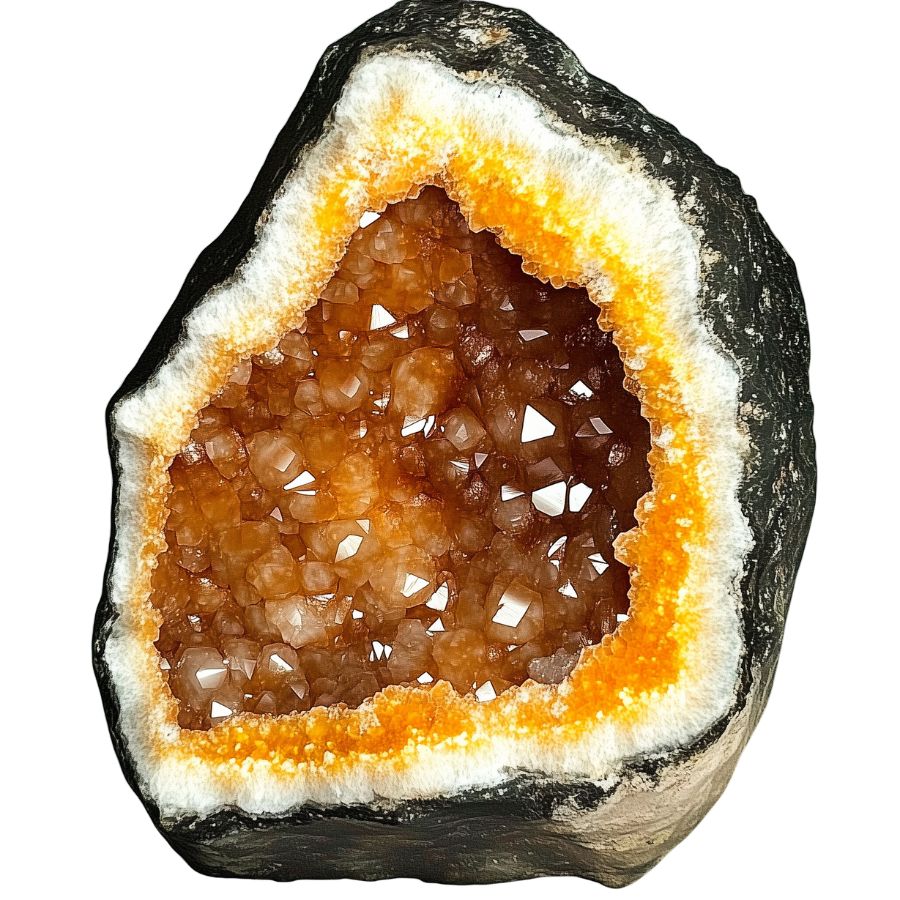
Geode
Geodes form when mineral-rich water gets trapped inside a hollow space in a rock, creating a cavity. Over time, crystals grow inside, making each geode unique. In Michigan, you can mostly find quartz and calcite geodes.
Some even have traces of other minerals like fluorite or celestite. You can discover hidden Geode locations with our complete Michigan guide.
Why They’re Valuable
The beauty of geodes is what makes them so prized. When you crack one open, you never know what you’ll find inside—sparkling quartz, intricate patterns, or even rare minerals.
Beyond their aesthetic appeal, geodes are often used in jewelry, home décor, and even as educational tools for teaching geology.
Great Places to Find Geodes in Michigan
You don’t have to travel too far to find these hidden gems. Here are some of my favorite spots where you can try your luck:
- Lake Huron Beaches: The shorelines, especially around the northern part, are a good place to spot geodes among the rocks and pebbles.
- Gravel Pits in Southern Michigan: Many private gravel pits allow geode hunting with permission, so it’s worth checking out if you’re in this area.
- Drummond Island: Known for its unique geology, this island offers great opportunities for rockhounding, and geodes are among the treasures you might uncover.
Get the full scoop on Geode locations throughout Michigan here.
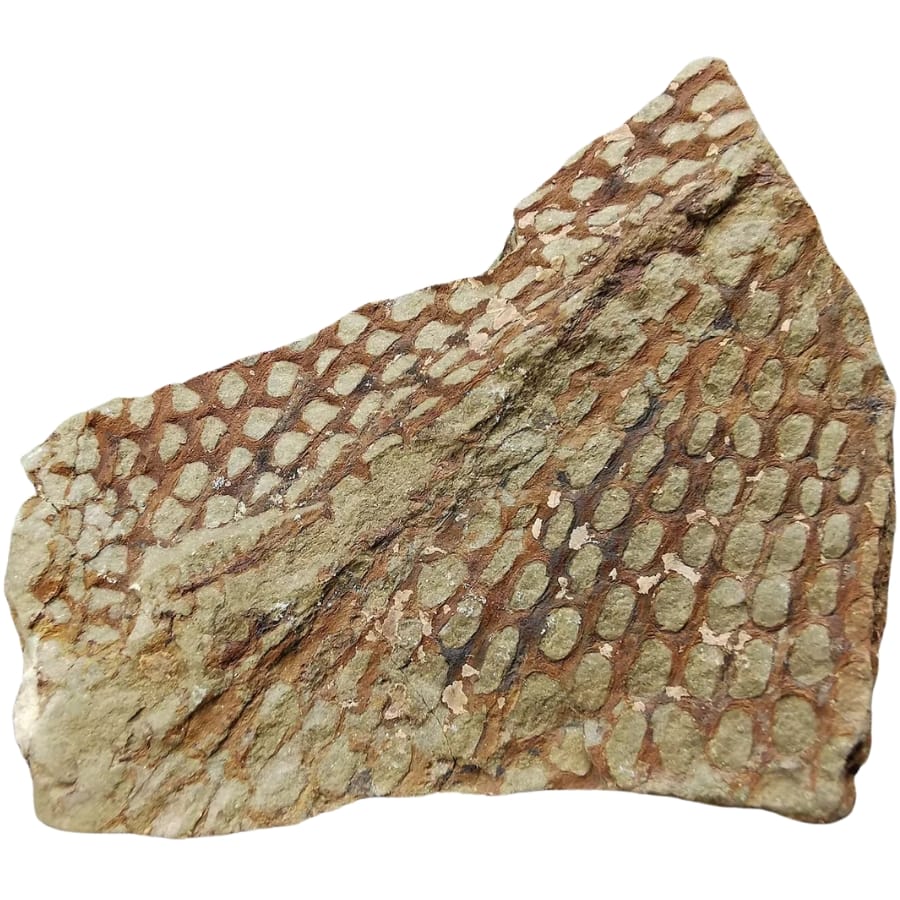
Fossils
Michigan is home to a variety of fossils, mostly from the Paleozoic Era, which spanned from about 540 million to 250 million years ago. The state’s landscape was once covered by shallow seas, so many of the fossils found here come from marine life.
Common fossils include Coral, Brachiopods and Clams, Crinoids, and Sharks Teeth. (Explore every Fossil location in Michigan with our detailed guide).
Why Fossils Are Valuable
Fossils help us understand the Earth’s history and the life forms that once inhabited it. For paleontologists, fossils provide valuable insights into ancient ecosystems, climates, and the evolution of life on Earth.
For locals and enthusiasts, finding a fossil can feel like connecting with the past in a deeply personal way. The fossils found in Michigan are especially valuable for scientific research because they offer a glimpse into the prehistoric environments that existed long before humans arrived on the scene.
Great Places to Find Fossils in Michigan
Michigan offers several great spots for fossil hunting. If you’re ready to go on your own fossil adventure, here are some top places to explore:
- Lake Michigan Shoreline – The beaches along Lake Michigan, especially near the town of Saugatuck, are great places to find fossils, particularly fossilized corals and brachiopods.
- Grand Ledge – Located just outside Lansing, Grand Ledge is known for its exposed bedrock, where you can often find crinoid stems and brachiopods.
- Pictured Rocks National Lakeshore – This stunning spot along Lake Superior not only offers breathtaking views but is also a great place to find fossils, especially in the cliffs and exposed rock formations.
See where else to find Fossils in Michigan with our full guide.
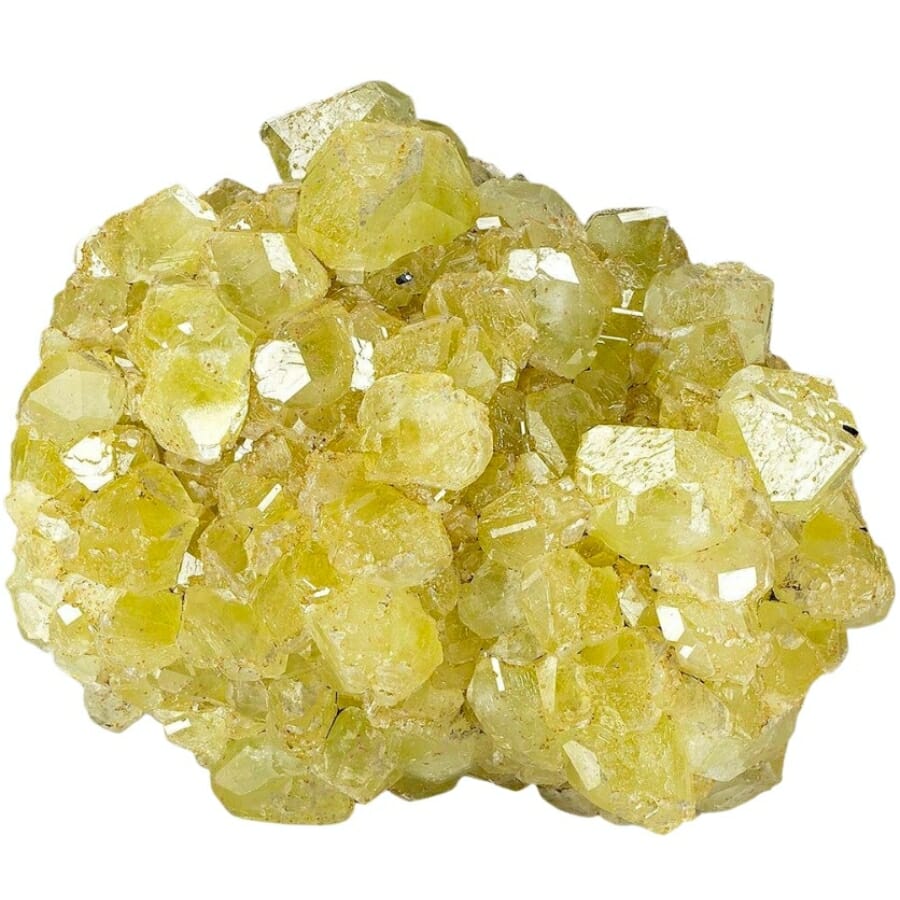
Datolite
Datolite is a calcium borosilicate mineral that forms in crystal clusters or nodules, often found in old copper mining regions. Michigan is famous for its richly colored datolite, which comes in shades of white, pink, orange, green, and even rare yellows.
The variety depends on the trace elements, like copper, found in the surrounding rock. It’s one of the most diverse and beautiful datolites you’ll find anywhere in the world.
Why It’s Valuable
Michigan’s datolite is special for more than its beauty. Its rarity makes it highly collectible, and its strong connection to the state’s copper mining history adds a layer of nostalgia for local collectors.
Lapidary artists love it too—it polishes up beautifully, making it ideal for unique jewelry or display pieces. Some specimens with vibrant colors or intricate patterns can even fetch high prices.
Great Places to Find It Here
If you’re ready to start looking for datolite, there are plenty of promising spots across Michigan. Here are some of the best places to hunt:
- Calumet Area: The old mining dumps near Calumet in the Keweenaw Peninsula are known for yielding beautiful datolite nodules. Early morning trips or cooler autumn days are perfect for rockhounding here.
- Cliff Mine Tailings: Another hotspot in the Keweenaw, the tailings of Cliff Mine have long been a favorite for collectors. Springtime, when vegetation hasn’t fully grown in, is a great time to visit.
- Isle Royale: If you’re visiting Isle Royale, summer is the ideal time to explore. Be sure to familiarize yourself with the park’s regulations about collecting minerals.
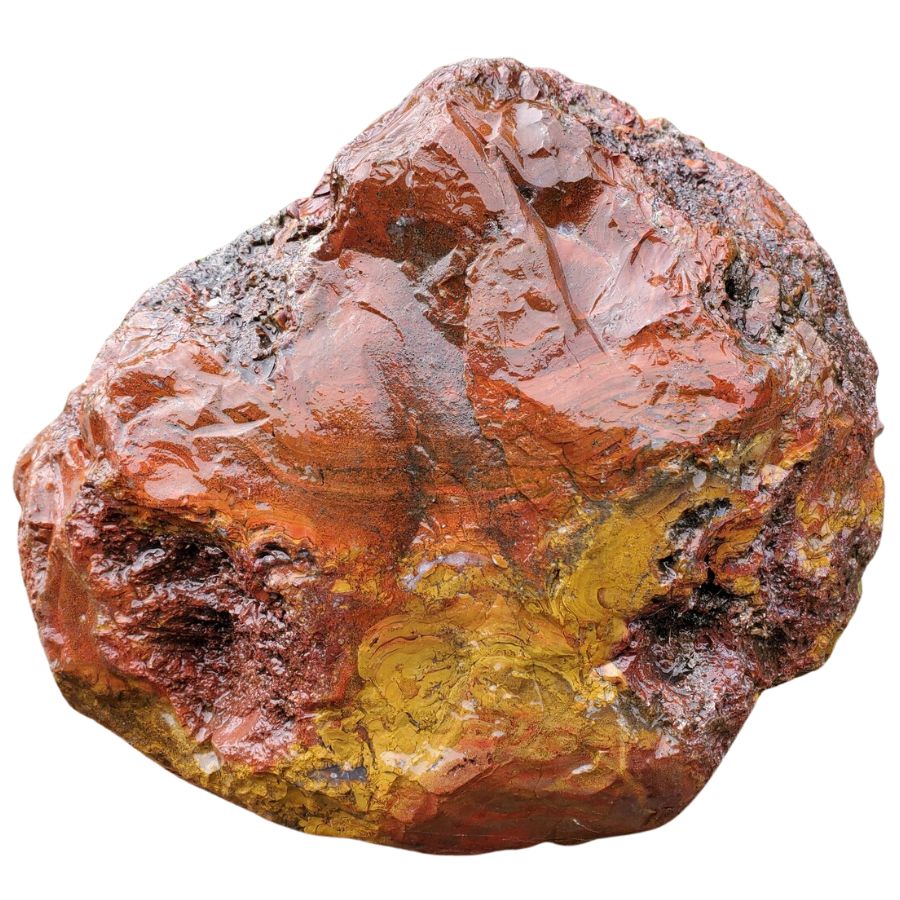
Jasper
Jasper is a form of chalcedony, a microcrystalline variety of quartz, and it’s known for its rich, earthy tones.
Here in Michigan, you’ll find several types, including red jasper, which gets its color from iron oxide, and brecciated jasper, which has a beautiful mosaic-like appearance.
Picture stone, another variety, features intricate patterns that can resemble landscapes. Each type reflects Michigan’s diverse geological history.
Why It’s Valuable
Jasper isn’t just pretty—it’s also practical and meaningful. Artists and jewelers prize it for its durability and striking appearance.
Many people believe jasper has grounding and calming properties, making it a favorite for personal use in meditation or as a talisman.
Great Places to Find Jasper in Michigan
If you’re ready to hunt for jasper, there are plenty of spots to explore. Here are a few I recommend:
- Lake Superior Shorelines: The beaches along Lake Superior are a treasure trove for rockhounds. After storms, you can often find jasper mixed with other stones like agates and quartz.
- Ludington State Park: Located along Lake Michigan, this park is a fantastic spot for beachcombing and exploring. The shoreline and dunes often reveal small pieces of jasper, especially after high winds or waves.
- Presque Isle Park in Marquette: This scenic park offers rocky shores where jasper can be found among other unique stones.

